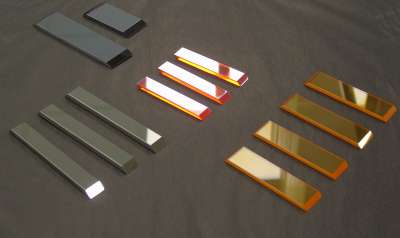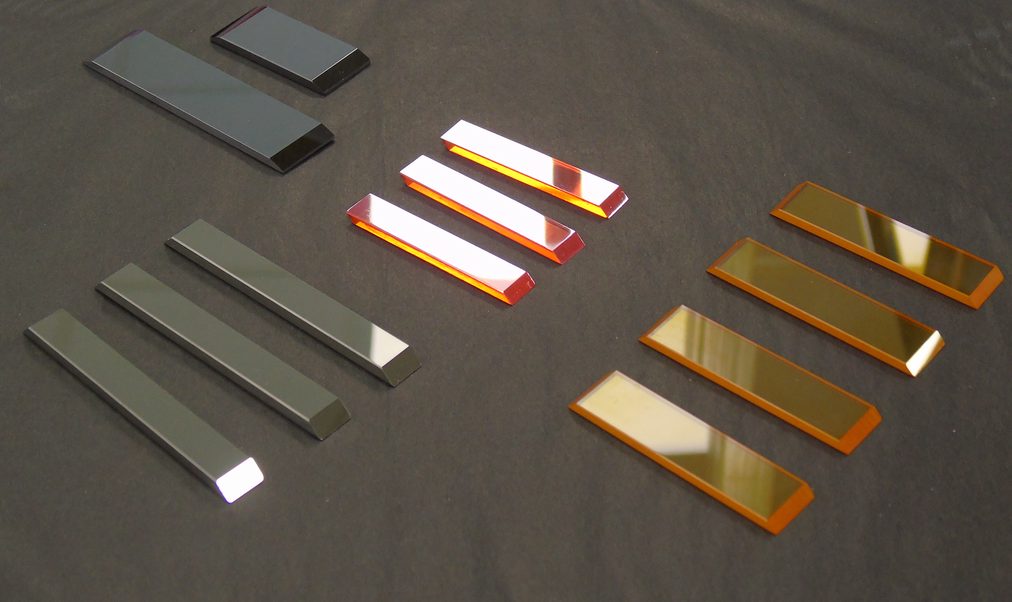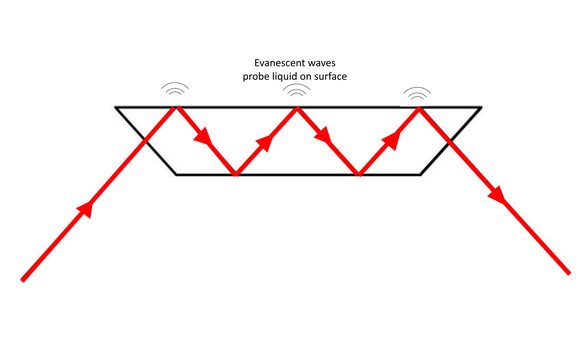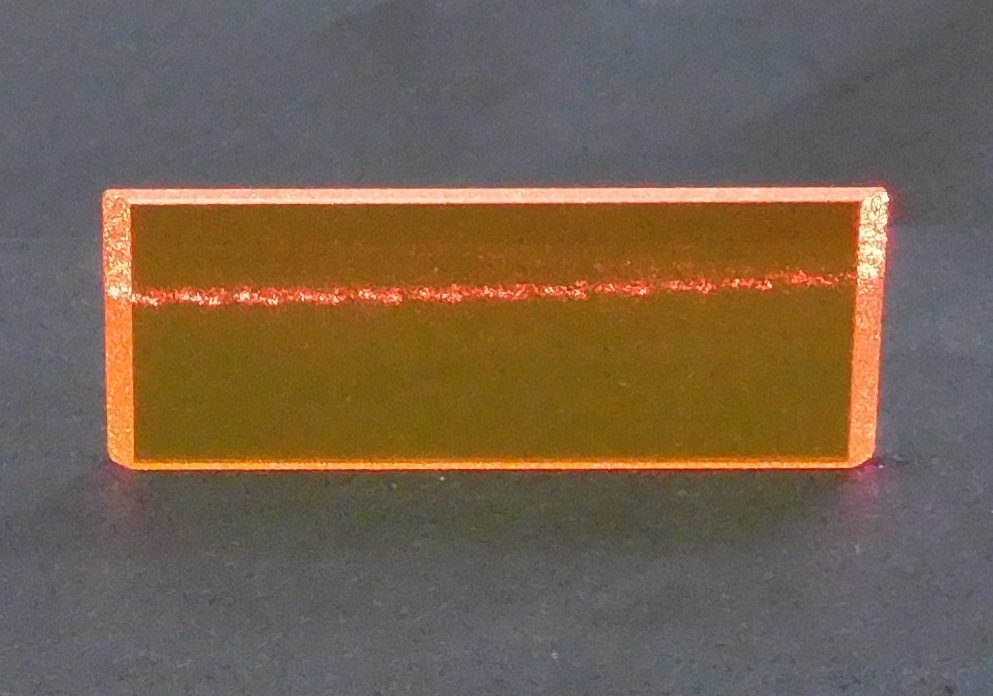

Read our April 2021 newsletter.
ATR Prisms For Fast Efficient IR Spectroscopy.
The acronym ATR refers to Attenuated Total Reflection and it is a technique used in IR spectroscopy.
Flat ATR plates, made by Crystran, enable the analysis of small quantities of liquids quickly and easily, with minimum preparation.
Total Internal Reflection (TIR) is a well-known phenomenon, occurring where light exceeds a critical angle at a material boundary of higher to lower index. Although we often consider such reflections to be completely lossless, or 100% efficient, the light wave penetrates evanescently into the second medium by a small distance which is a function of (a) the difference in refractive indices, (b) the polarisation of the beam, and (c) the angle of incidence (albeit greater than the critical angle). This provides the opportunity to spectroscopically characterise the nature of the second medium by looking for particular absorption peaks indicative of known trace compounds.


When a high refractive index material such as Zinc Selenide is fabricated as an extended flat prism, a test beam can travel through it ‘bouncing’ its way from face to face. At each reflection, an evanescent wave propagates and if a test liquid is present on the surface then the IR signature of that liquid is extracted from the test beam. This gives rise to the term Attenuated in the acronym ATR.
A high refractive index is required in the prism so that the index of the sample does not neutralise it.


Crystran makes ATR prisms routinely from ZnSe, Germanium, Silicon and KRS5 with prism angles of 22.5 º, 30º, 45º and 60º to suit a variety of geometries, wavelength ranges, and reflection conditions.
HeNe laser beam shows up internal (fresnel) reflections in a ZnSe ATR Prism


Evanescent field - Wikipedia
The evanescent wave that occurs at each internal reflection is a complex non-intuitive subject but one that can be handled mathematically. Of course, as optical component manufacturers or spectroscopists we can just accept the theory, but it is comforting to know that it works. With a ZnSe 45º prism, the evanescent wave at each reflection penetrates the sample to a depth of about 1µm.
We have several interferometers on the premises including one in each of our 3 polishing shops.